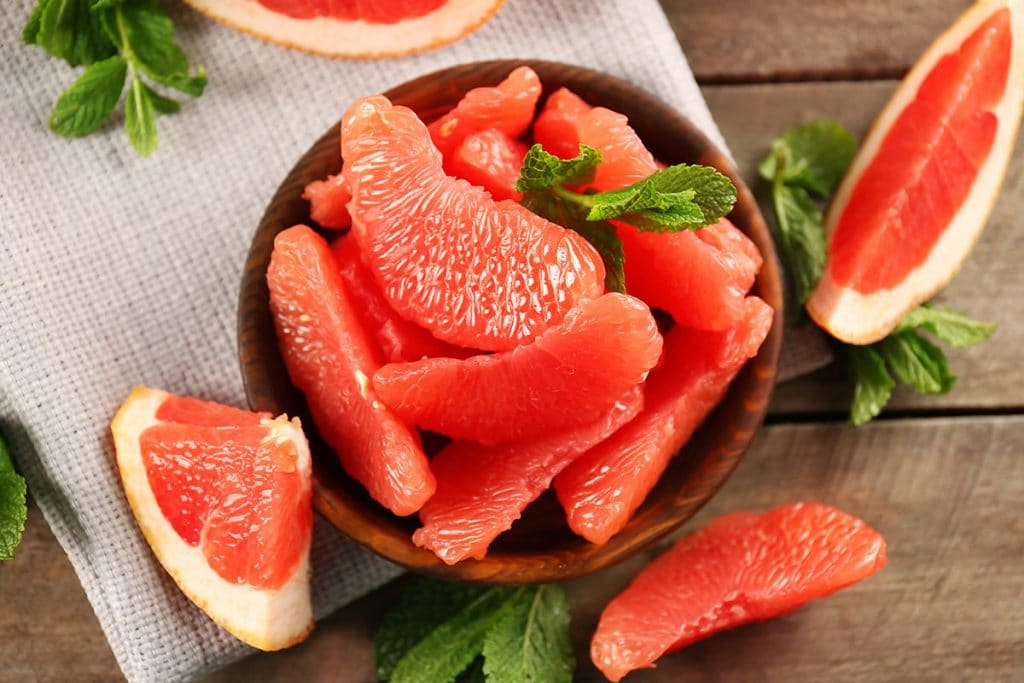The first time I mentioned FODMAPs to a patient; he stared at me blankly and then said ‘Uh, nope I’m not really into fancy navigation systems.’ That was funny in a sad way. After all, FODMAPs are very trendy in the health and wellness world, but people who would benefit the most from understanding the FODMAP science have never even heard of them…
You see, FODMAPs have absolutely nothing to do with any device whatsoever. They’re actually foods we commonly eat. So why would someone consider trying a low-FODMAP diet?
Well, let’s say, you (or someone you know) suffer from irritating digestive or IBS symptoms. If there were a natural strategy that could help reduce these debilitating symptoms, wouldn’t you want to know more about it?
In this article, I’ll cover the fundamentals of FODMAPs, the art of the low-FODMAP diet and how to use the science to improve your digestion (after consulting your physician).

What exactly are FODMAPs?
In a nutshell, FODMAPs are short-chain carbohydrates that are partially absorbed in the gastrointestinal tract where they are rapidly fermented. FODMAPs stand for ‘fermentable oligosaccharides, disaccharides, monosaccharides and polyols’ – saccharides simply mean sugar.
To understand the low-FODMAP diet, we’ll need to cover some basic biochemistry. But don’t worry; I’ll keep it short and sweet (no pun intended).
Monosaccharides
‘Mono’ means ‘one’ – so monosaccharides are molecules with only one sugar. The monosaccharide of interest when it comes to digestion is fructose or the sugar found in fruits.
A food is considered a high FODMAP food if it contains more than:
- 5g of fructose in excess of glucose per 100g serving.
- 3g of fructose per serving.
Other monosaccharides include glucose and galactose.
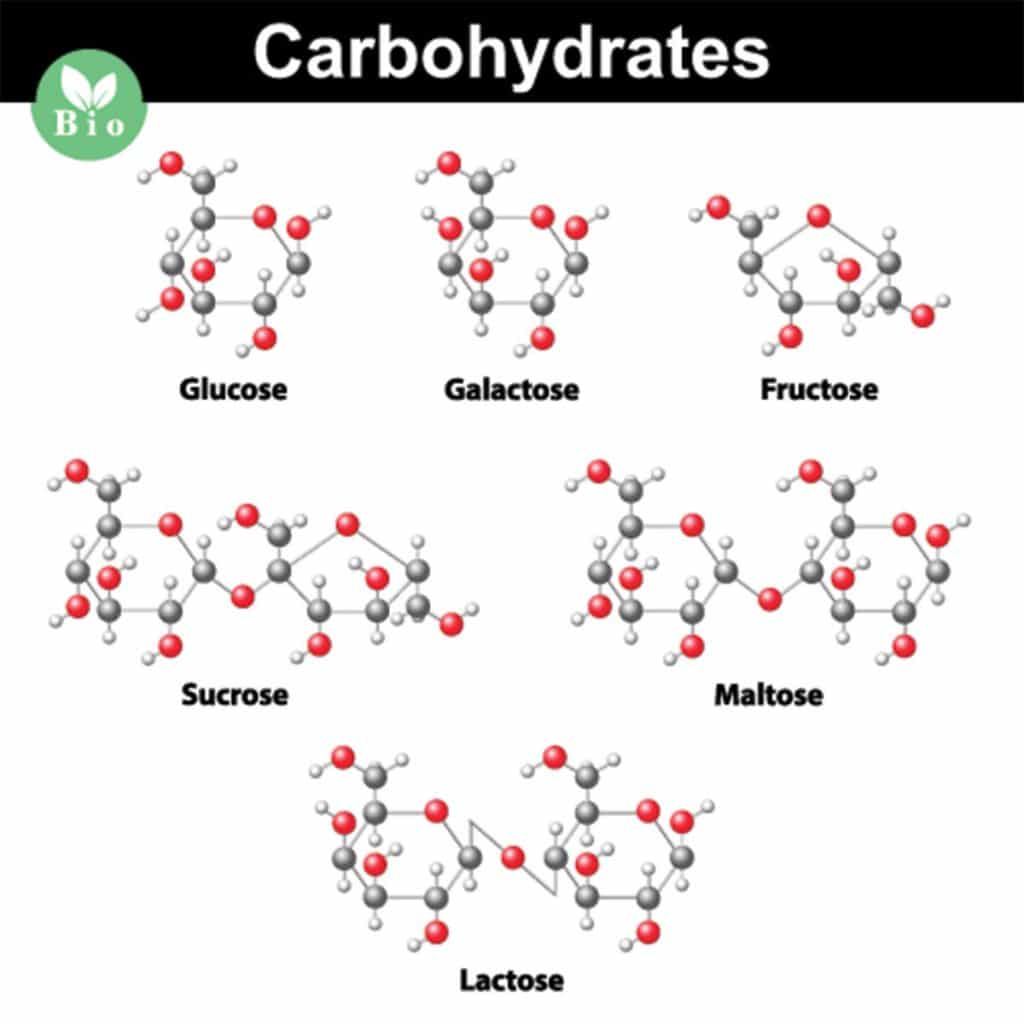
Disaccharides
‘Di’ means ‘two’ – as you must have guessed, disaccharides have two sugar molecules. The disaccharide that causes the most digestive issues is lactose or the sugar present in milk and dairy products. Lactose consists of one glucose molecule attached to one galactose molecule.
The other disaccharides are:
- Sucrose or table sugar which consists of one glucose molecule attached to one fructose molecule.
- Maltose, also known as ‘malt sugar’, is present in the starch that we get from tubers and grains. It consists of two glucose molecules attached together.
Oligosaccharides and Polysaccharides
‘Oligo’ means ‘few’ and ‘poly’ means ‘many’. As such, oligosaccharides refer to carbohydrates containing three to ten sugar molecules attached together whereas polysaccharides are those long chains of carbohydrates with 11 to 15 sugars bonded together.
Oligosaccharides are divided into two categories namely the prebiotics fructans and galactans which act as food for bacteria. Any food that contains more than 0.2g of fructan per serving is considered a high-FODMAP food.

In the FODMAP context, fructans can refer to both oligosaccharides and polysaccharides. Short-chain fructans are better known as fructo-oligosaccharides, or FOS, whereas inulin is a longer-chain fructan (polysaccharide). Both FOS and inulin exist naturally in vegetables and grains.
Polyols
Those are sugar alcohols such as:
- Maltitol
- Mannitol
- Sorbitol
- Xylitol
In general, humans absorb these sugar alcohols poorly – this is why products containing polyols will often carry a warning message saying that the product may cause digestive upset or diarrhea.
[color-box color=”main”]Take home message: FODMAPS are highly fermentable carbohydrates that are the most likely to cause digestive distress. These include:
- Fructose (monosaccharide)
- Lactose (disaccharide)
- Fructans (these include the oligosaccharide FOS and the polysaccharide inulin)
- Galactans (oligosaccharides)
- Sugar alcohols (polyols)
[/color-box]
Should you care about FODMAPs?
Do you suffer from any of the following?
- Irritable bowel syndrome (IBS)
- Crohn’s disease
- Celiac disease
- Ulcerative colitis
- Recurrent digestive issues such as bloating, abdominal pain, diarrhea, constipation or gas
- Heartburn
If despite eating a real food diet (one that is free from processed foods and industrial oils), you answered yes to any of the above questions, you may want to try a low-FODMAP diet for a while.
The same goes for individuals who have never had any digestive problems but end up constipated while transitioning to a Paleo diet.
What makes FODMAPs problematic?
While FODMAPs are usually well tolerated by healthy individuals, issues crop up when the body has trouble absorbing these saccharides. These carbohydrates end up being excessively fermented by bacteria in the intestines and can cause digestive mayhem in susceptible people.
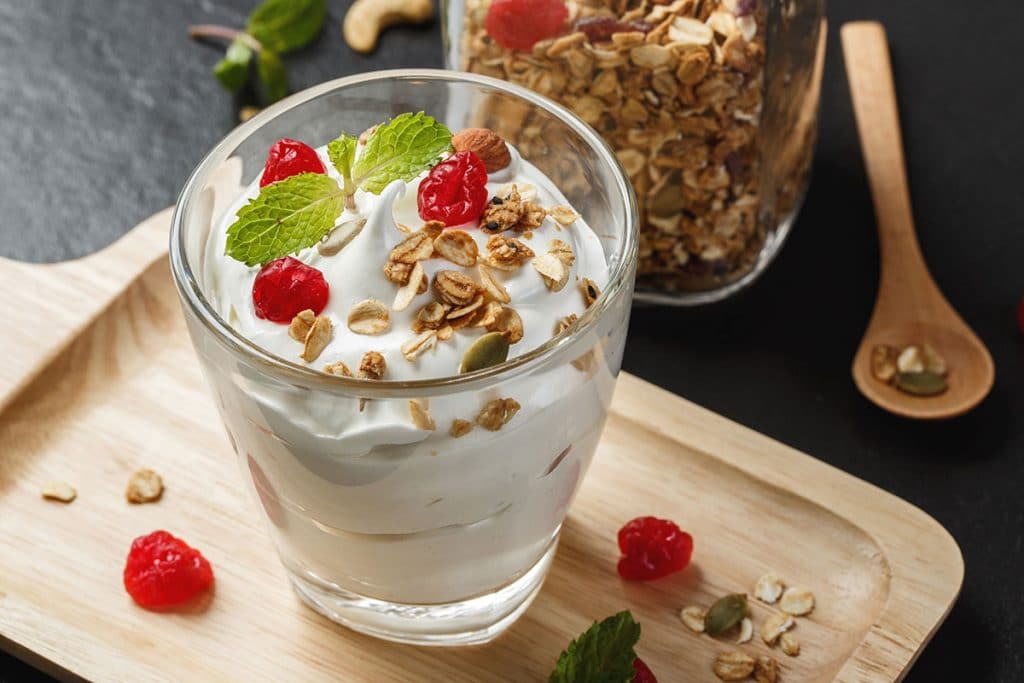
You see, in order to absorb FODMAPs, the body must break down (digest) disaccharides and polysaccharides into monosaccharides. If (for reasons covered below) the body is unable to digest these FODMAPs, bacteria naturally present in the intestines will gladly take over the job.
It is important to understand that bacteria will easily, and rapidly, ferment FODMAPs since these are short-chain carbohydrates. And when these bacteria have ‘access’ to disaccharides or oligosaccharides, they will produce enzymes to break down these molecules into monosaccharides so that they can feed on them. This fermentation process produces gas.
That’s not all: when carbohydrates ‘sit’ in the intestines, they draw water in – this is called an osmotic effect. And this effect is enhanced by the small size of the carbohydrates.
Now, the excess gas caused by fermentation and the excess water induced by the osmotic effect distend the lumen of the intestine. This swelling triggers the symptoms of flatulence, belching, bloating, constipation and/or diarrhea, nausea, acid reflux, pain or discomfort as well as fatigue.
The following video illustrates how FODMAPs can affect our digestion.
https://www.youtube.com/watch?v=Z_1Hzl9o5ichttps://www.youtube.com/watch?v=Z_1Hzl9o5ic
How does bacterial fermentation affect motility?
When bacteria eat our food, they produce the following gasses:
- Methane which causes constipation by interacting with the nervous system in the intestinal wall.
- Hydrogen which promotes diarrhea. The exact mechanism behind this is currently unknown.
Moreover, bacteria also produce short-chain fatty acids during their ‘feast’ – these can also increase motility.
[color-box color=”main”]Take home message: FODMAPs can cause problems in susceptible individuals because some bacteria are rude! They eat OUR food and then fart in our intestines… Plus they also possess a strong osmotic (drawing water) effect. [/color-box]
Why would anyone react to FODMAPs?
One of the underlying cause is carbohydrate malabsorption. This malabsorption occurs when carbohydrates bypass digestion in the small intestine and are left in the lumen (the inside space) of the small intestine or the large intestine. As explained earlier, this will cause excess gas and osmosis.
What causes carbohydrate malabsorption?
Issues with carbohydrate absorption can be linked to:
-
A lack of enzyme
– That’s the case with the fructans and the galactans: unlike bacteria, we do not produce enzymes to digest these oligosaccharides. So, the bacteria will eat these oligosaccharides and produce gas.
- Insufficient brush-border enzyme production – Brush-border enzymes refer to digestive substances that are embedded in the microvilli, finger-like projections in the intestine. A damaged intestinal lining (as in celiac disease or in small intestinal bacterial overgrowth) or genetics (such as primary lactose intolerance) can lead to a decreased production of these enzymes. For instance, individuals who do not produce enough of the enzyme lactase will react to products that contain lactose.
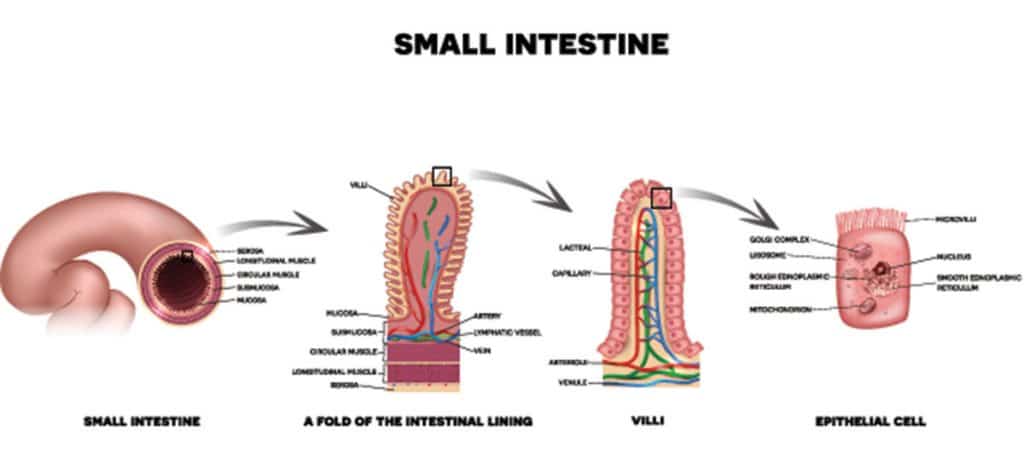
-
Issues with transporters
These transporters act as ‘doors’ that allow molecules such as fructose to cross the lining of the intestines and enter the circulation (that is, they are absorbed). In some individuals, the transporters are not working normally. For instance, they may get saturated easily (the ‘door’ is too small for all the fructose to go through). Or some people may have too few transporters. Any issue with the transporters means that the fructose will not be absorbed properly and will be left stranded in the lumen of the intestine where bacteria will feast on it.
-
The size of the substance
Polyols are too large to be effectively absorbed so they stay in the intestines where they cause an osmotic effect that results in diarrhea.
-
Very fast transit
If for some reason, the food you eat moves very rapidly through your digestive tract, it won’t have the chance to be broken down. When this happens, the food is rapidly delivered to the large intestine making the bacteria there very happy.
Note: It is worth noting that individuals with small intestinal bacterial overgrowth (SIBO) who also have a reduction in brush-border enzymes will often be unable to digest all disaccharides and most of the polysaccharides. However, this is not covered by the low-FODMAP diet. So, if you suspect you have SIBO, you may want to work with a qualified healthcare professional to come up with a dietary protocol that is better suited to your condition.
[color-box color=”main”]Take home message: Anything that causes carbohydrates to stay in the intestinal lumen instead of being absorbed will lead to carbohydrate malabsorption. [/color-box]
Who would be the most affected by carbohydrate malabsorption?
Individuals with some sort of functional gastrointestinal conditions such as IBS or the symptoms of IBS will often have a hard time absorbing carbohydrates. These people are more likely to suffer from luminal distention (swelling of the lumen or inside space of the intestines) compared to healthy individuals.
One important point here is that people with these gastrointestinal conditions often suffer from visceral hypersensitivity which is NOT within conscious control. What this means is that their nervous system and intestines will react more to this swelling causing physical pain which a healthy individual wouldn’t feel.
Do FODMAPs affect everyone?
Yes and no. You see, everyone will react to the oligosaccharides (fructans and galactans) and polyols. Even healthy individuals. However, compared to individuals with functional gastrointestinal conditions, those who are healthy will react to much, much higher doses.
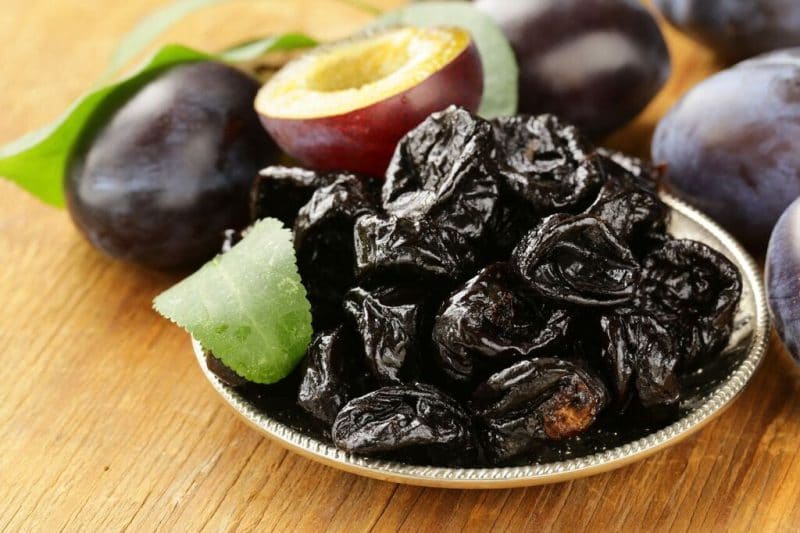
I’m sure, you’ve probably met people who don’t normally have digestive problems but end up with diarrhea or loose stools after consuming lots of prunes. Well, that’s because they’re reacting to the polyols in the fruit.
On the other hand, only specific individuals will react to mono- and disaccharides for reasons explained earlier.
FODMAP testing
You can determine whether you react to fructose, lactose and sorbitol by doing a hydrogen breath test which is typically recommended in cases of small intestinal bacterial overgrowth. However, instead of using glucose or galactose, you’ll be given a fructose-, lactose- or sorbitol-containing solution to drink.
Since humans do not produce hydrogen or methane, high levels of methane, or hydrogen or both can only indicate that bacteria have fermented the fructose, lactose or sorbitol. The test will also help you determine how much fructose, lactose or sorbitol you can tolerate.
To determine whether you react to fructans, galactans and mannitol, I recommend an elimination diet protocol.
So now that you know what FODMAPs are and why they can cause trouble, let’s move to the low-FODMAP diet.

Low-FODMAP diet: Evidence-based or just another fad?
Many clinical trials indicate that the low-FODMAP diet can successfully reduce digestive symptoms, especially among those with IBS. For instance, in one small 3-week study, individuals with or without IBS were randomly given a low-FODMAP diet (the research group) or a standard Australian diet (the control group). The low-FODMAP diet contained less than 0.5g of FODMAPs per meal. The participants were asked to rate their daily symptoms on a 0 – 100 scale. At the end of the study, the average score of the research group was 22.8 – IBS patients who consumed a regular diet scored an average of 44.9. That’s a 50% reduction in digestive symptoms such as bloating, gas and abdominal pain after just 3 weeks on a low-FODMAP diet!
What is a low-FODMAP diet?
As the name suggests, the low-FODMAP diet revolves around reducing specific carbohydrates (high FODMAP foods and, in some cases, moderate FODMAP foods) that appear to cause problems for people. It doesn’t have anything to do with dietary proteins and fats.
The lists below are not exhaustive so make sure to ‘listen’ to your body and read the ingredient list when appropriate. You may also want to try the low FODMAP smartphone app of Monash University which is the most reliable source of information on the FODMAP content of foods. It is available for both iPhone and Android users.
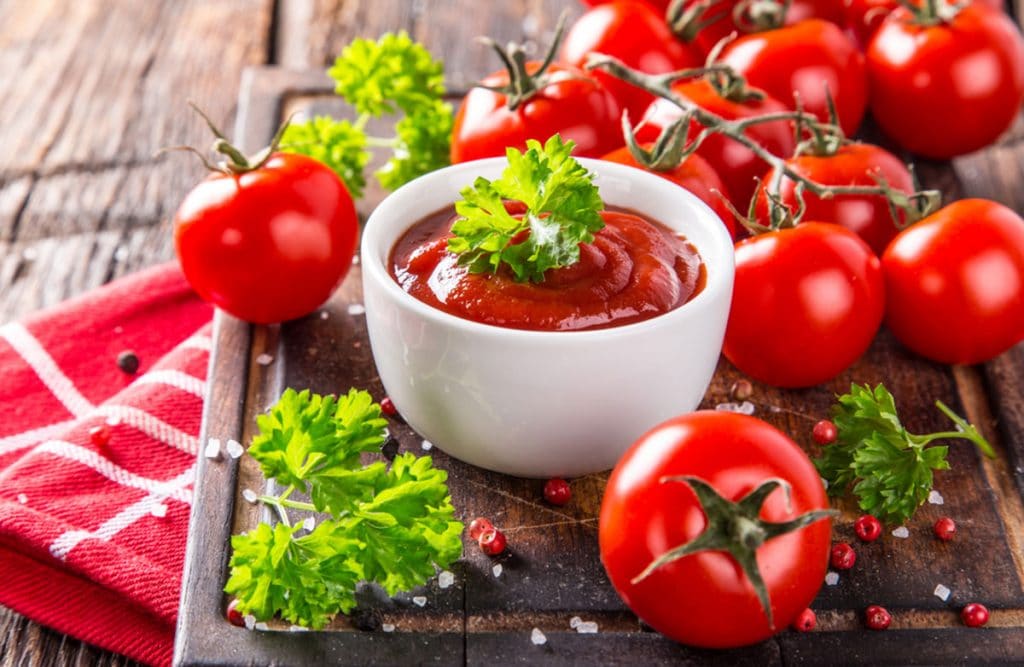
High FODMAP foods – Avoid
Vegetables (FODMAP in high amounts)
- Artichoke (fructose)
- Asparagus (4 spears, fructose)
- Avocado and guacamole (more than 1/8 slice of a whole avocado; polyol) *
- Cabbage (fructans)
- Cauliflower
- Jerusalem artichoke (fructans)
- Leeks (fructans)
- Okra (fructans)
- Onions (fructans)
- Shallot (fructans)
- Snow peas (fructans and polyols)
- Sugar snap peas (fructose)
- Raddichio (fructans)
- Tomato sauces and paste (fructose and fructans)
* 1/8 of a whole avocado is low in FODMAP and is usually well tolerated.
All legumes and pulses (fructans and galactans)
Cereals
- Rye (fructans)
- Wheat-containing breads (fructans)
- Wheat-based cereals (fructans)
- Wheat pasta (fructans)
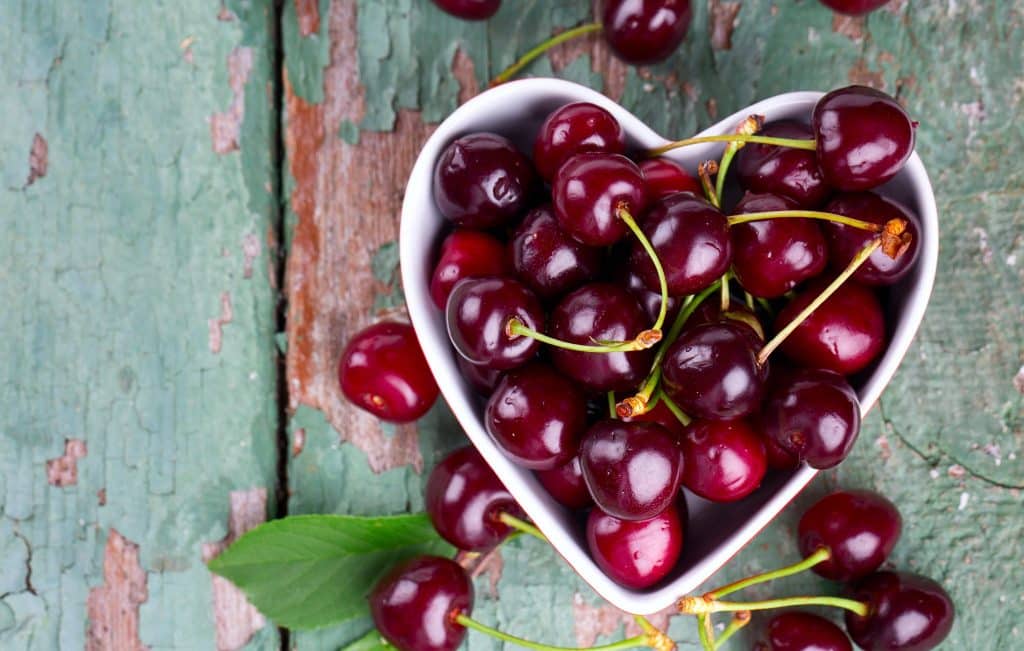
Fruits (FODMAP in high amounts)
- Apples (fructose and polyol)
- Apricots (polyols)
- Blackberries (polyol)
- Cherries (fructose and polyol)
- Dried fruits (fructose)
- Fruit juices (fructose)
- Grapes (more than 15 per serving; fructose)
- Mango (fructose)
- Nectarines (polyol)
- Pears (fructose and polyol)
- Persimmon (polyol)
- Plum (polyol)
- Watermelon (fructose and polyol)
Nuts (FODMAP in high amounts)
- Almonds (fructans)
- Hazelnuts (fructans)
- Pistachios (fructans)
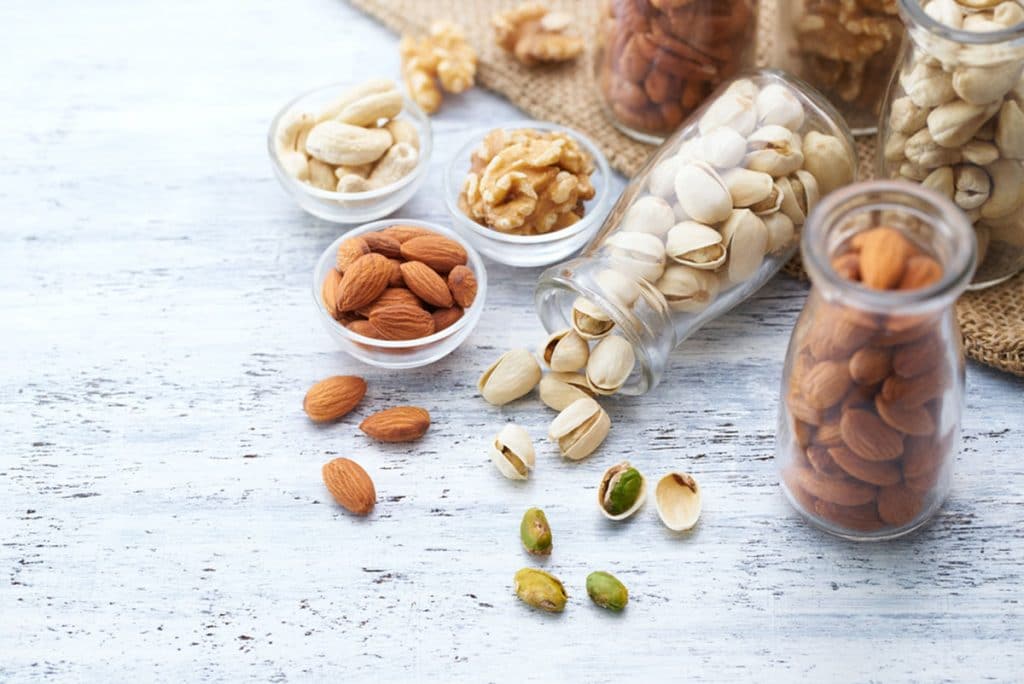
Dairy (FODMAP in high amounts)
- Soft unripened cheese like mascarpone, ricotta and cream cheese (lactose)
- Milk (lactose)
- Yogurt (lactose and, if sweetened, fructose or sugar alcohols)
Sweeteners (FODMAP in high amounts)
- Agave syrup (fructose)
- Artificial sweeteners (polyol)
- High-fructose corn syrup (fructose)
- Honey (fructose)
- Sugar-free foods (polyols)
Drinks and alcoholic beverages (FODMAP in high amounts)
- Beer (some contain mannitol; gluten)
- Coconut water (250ml serving; polyol and moderate amounts of fructans)
- Fruit juices
- Port wines
- Sweeter wines
- Sodas
Hot beverages
- Chai tea, strong
- Chamomile tea
- Fennel tea
- Herbal tea, strong (especially the fruit-based ones with chicory root)
- Oolong tea
Food supplements, medications, seasonings
Talk to your pharmacist before taking any medication or supplement.
- Carob powder (2 heaped teaspoons)
- Chicory (fructans)
- Fructo-oligosaccharide (fructans) and prebiotics (often fructans)
- Inulin
- Onion and garlic powder (fructans)
- Sugar alcohols (sorbitol, mannitol, xylitol, isomalt)
- Thickeners and stabilizers like gums and carrageenan

Moderate FODMAP foods – Eat with caution
If you choose to eat any of the following foods, make sure to watch how much you consume in one sitting and closely monitor your symptoms.
Vegetables
- Beetroot (fructans)
- Broccoli (fructans)
- Brussels sprouts (fructans)
- Butternut squash (fructans)
- Celery (polyol)
- Fennel bulb (fructans)
- Green peas (fructans)
- Mushrooms (polyol)
- Sauerkraut (fructans)
Fruits
- Banana, unripe
- Grapes (10 to 15 per serving; fructose)
- Longan (polyol)
- Lychee (polyol)
- Rambutan (polyol)
Dairy
- Aged cheese (lactose)
Drinks
- Black tea leaves (1 bag, strong)
- Dandelion tea, strong
Nuts and seeds
- Most nut and nut butters like cashews, macadamia, pecan, pine nuts, walnuts
- Most seeds and seed butters such as pumpkin, sesame and sunflower seeds
Starches
- Sweet potatoes and yams (polyol)
Note: 1/2 cup (37g) of desiccated (dried, shredded) coconut contains moderate amounts of FODMAPs. If you’re still in the elimination phase, stick to 1/4 cup (18g) per serving – this is considered to be low FODMAP.
Safe foods – Low FODMAPs
You are a unique individual. And you know yourself better than anyone else. So, if you are sure that any of the following foods is problematic for you, just avoid it. Even if it is on the ‘safe’ list.
For instance, I have a few patients with gut dysbiosis and eczema (an autoimmune condition) who just cannot tolerate tomatoes which are nightshades.
Vegetables (maximum amount that is usually well tolerated)
- Alfalfa
- Bamboo shoots
- Bean sprouts
- Bell peppers
- Bok choy
- Carrots
- Cherry tomatoes
- Chives
- Cucumber
- Eggplant
- Endive
- Ginger
- Green beans
- Kale
- Lettuce
- Olives
- Parsnip
- Pickles (without added sugar)
- Seaweed
- Spinach
- Spring onion (green part only)
- Zucchini
Fruits (maximum amount that is usually well tolerated)
- Avocado (one 1/8 slice of a whole avocado)
- Banana (1 medium, ripe)
- Banana, dried (10 chips)
- Blueberries (20 berries)
- Cantaloupe (1/2 cup)
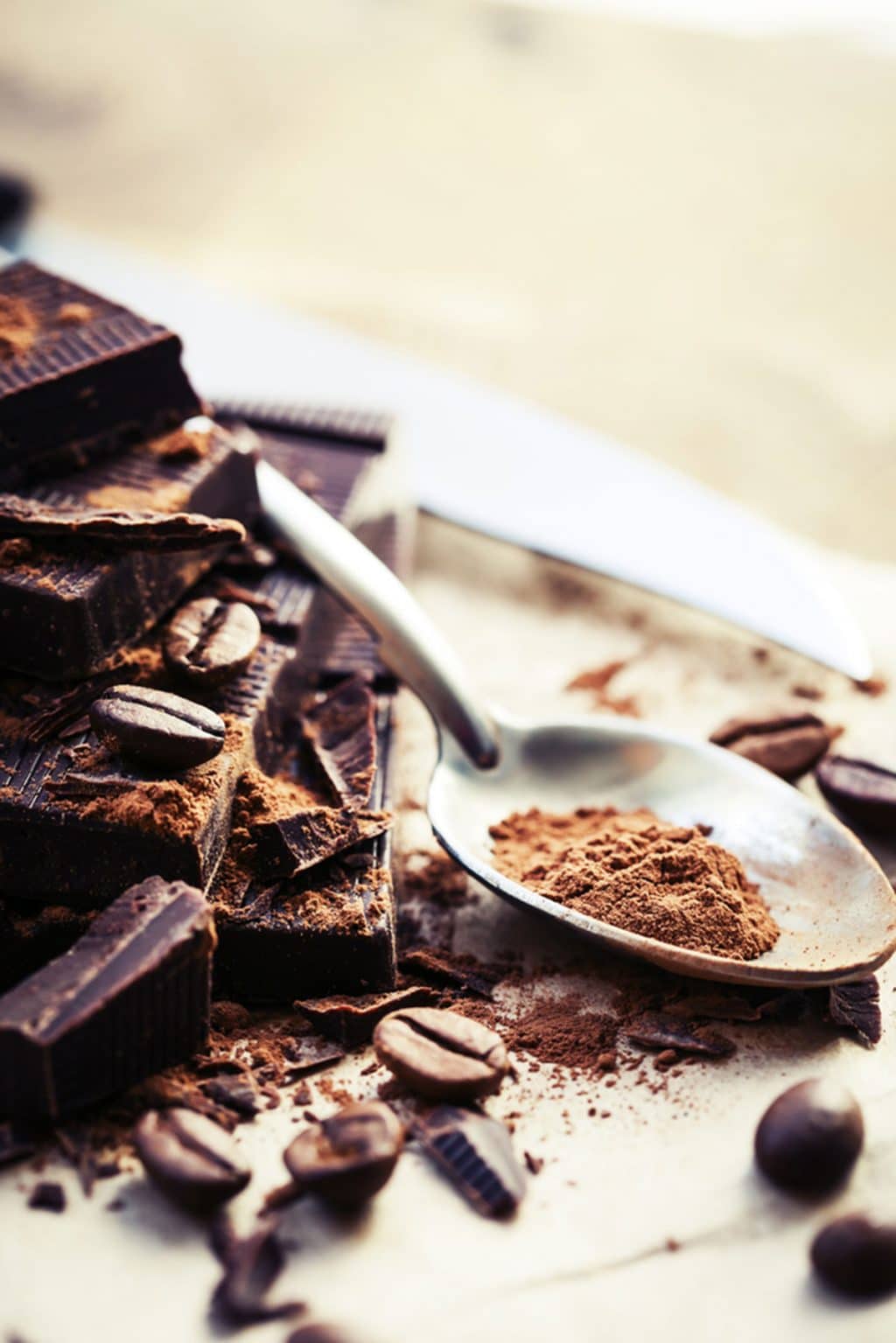
Drinks (maximum amount that is usually well tolerated)
- Black tea leaves (250ml serving, weak)
- Carob powder (1 heaped teaspoon)
- Chai tea (250ml serving, weak)
- Cocoa powder (3 heaped teaspoons)
- Coconut water (100ml serving)
- Dandelion tea (250ml serving, weak)
- Espresso (single or double shot)
- Peppermint tea (250ml serving, weak) [may exacerbate acid reflux in susceptible individuals]
- White tea leaves (250ml serving)
Note: Coffee can irritate the gut even in moderate amounts. As such, I strongly advise my patients to avoid coffee and caffeine-containing beverages during the elimination phase.
Is the low-FODMAP diet a lifelong one?
No, the low-FODMAP diet isn’t a life sentence – isn’t that a relief?
Monash University advises patients to try a strict low-FODMAP diet for 2 to 6 weeks. However, from professional experience, I have noticed that 2 weeks is way too short. The diet is quite complex and people typically need more than two weeks to stop accidentally consuming foods high in FODMAPs.
I usually advise patients to stay on a low-FODMAP diet for a minimum of 6 to 8 weeks – the duration of the diet will depend on how extensive the symptoms are and how they subside on the diet.
In some cases, a hydrogen breath test can identify which specific FODMAP are problematic for you. You may then need to follow the low-FODMAP diet for 3 to 4 weeks only.
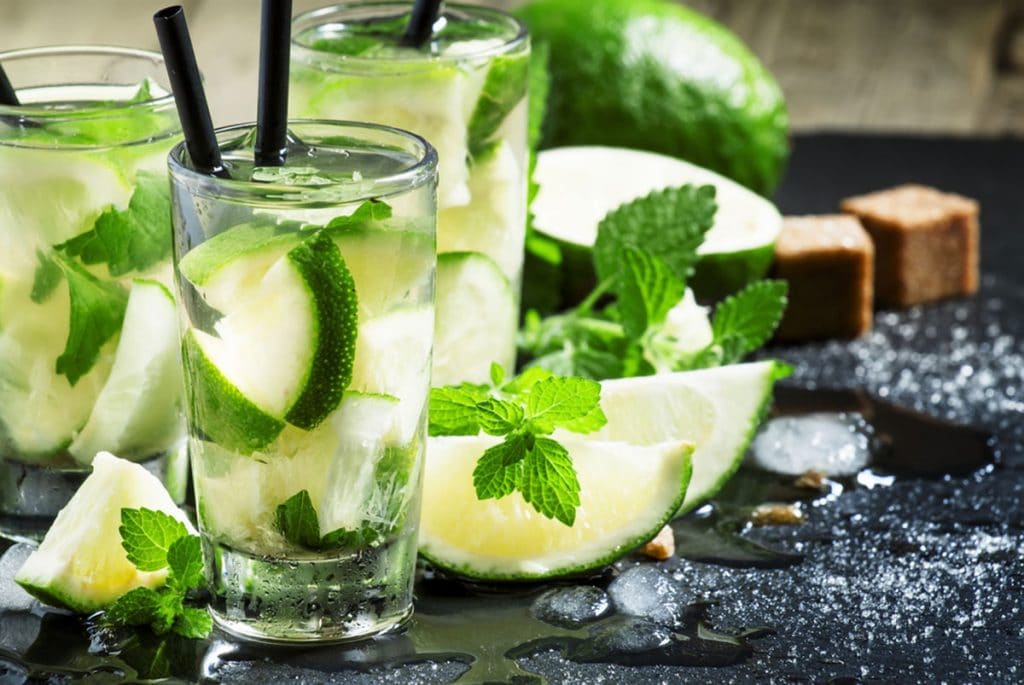
How does the low-FODMAP diet work?
In a nutshell, the diet can be broadly categorized as follows:
- Stage 1: This is the elimination phase in which you will be strictly excluding all high FODMAP and moderate FODMAP foods from your diet.
- Stage 2: During the reintroduction phase, you will start including one high-FODMAP food at a time for one week to see what triggers your symptoms. Some individuals choose to reintroduce one specific FODMAP at a time instead of one food at a time – for instance, foods containing fructose are reintroduced instead of reintroducing only, let’s say, grapes. However, from professional experience, I have noticed that the ‘one food at a time approach’, albeit more tedious, can make it easier to identify problematic foods.
- Stage 3: I like to call this the personalization phase. Once you’re done with the reintroduction phase, you’ll know which foods you can eat and which ones you would be better off avoiding. Well, at least until the root cause of your intolerance has been holistically addressed.
But why isn’t sucrose on the FODMAP list?
Sucrose (table sugar) consists of one glucose molecule bonded to one fructose molecule. So, you would think that someone who reacts to fructose will also react to sucrose. But that’s not the case. You see, the body has issues absorbing fructose when it is present in higher amounts than glucose (such as high-fructose corn syrup) or when you’ve eaten an excessive amount. Since the glucose and fructose content of sucrose is pretty much equal, the fructose in sucrose is absorbed to about 85% efficiency. The fructose kinds of ‘hops a ride’ with the glucose as the latter attaches to transporters.
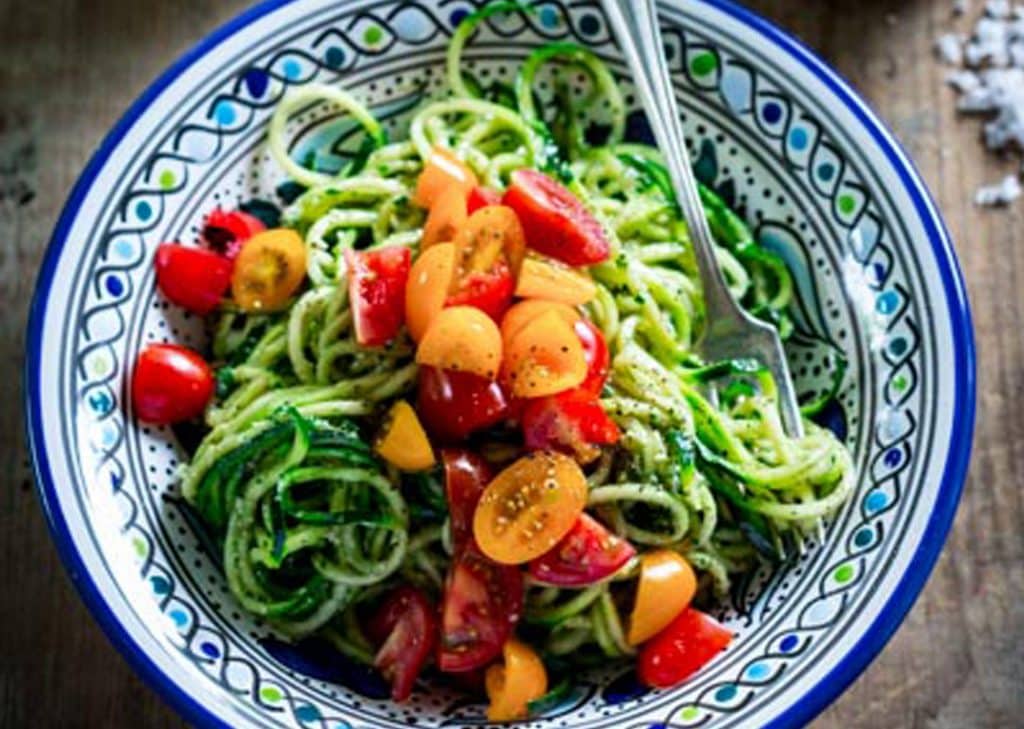
Tips to get the most out of the low-FODMAP diet
1. Eliminate gluten-containing products
Gluten is a protein and, therefore, not a FODMAP. This being said, in one study, IBS patients who reintroduced gluten after the elimination phase reported considerably worse symptoms.
2. Choose your probiotics wisely
Avoid those that contain FOS, GOS, inulin and other ingredients that are on either the high-FODMAP or the moderate-FODMAP list. You also want to avoid those that contain cellulose (see below).
3. Remember that not all fiber supplements were created equal
Gums (guar, locust bean, xanthan), pectin and cellulose are not related to FODMAPs. However, even these non-FODMAP ingredients can be fermented in our gut which means that can cause gastrointestinal issues in some individuals.
4. Keep in mind that fructans are water-soluble but not fat-soluble
Many of my patients who are on a low-FODMAP diet ask me if it’s okay to add chopped onions and garlic to soups and stews if they remove these pieces before eating. Well, since onions and garlic are rich in fructans and these are water soluble, this strategy will not work – the fructans will leech in the water. A better strategy would be to saute the onions and garlic in coconut oil and removing the pieces before adding the other ingredients since fructans are not fat-soluble and will therefore not leech in the oil.
5. Some low-FODMAP foods need portion control
- Zucchini becomes high FODMAP for fructans if you consume 100g per serving – keep your serving low-FODMAP by sticking to 66g (1/2 cup) per serving.
- Blueberries: A 28g serve is low FODMAP whereas a 60g serve is high FODMAP for fructans.
- Bok choy: A 1 cup serve is low FODMAP; a 1 1/4 cup serve is high FODMAP for sorbitol
- Canned tomatoes: 1/2 cup (90g) is low FODMAP; 1 cup (180g) is high FODMAP for fructose. To make tomato-based sauces go further, try adding some chicken stock.
- Chia seeds: 2 tablespoons are low FODMAP; 4 tablespoons are high FODMAP.
- Green beans: 86g is low FODMAP; 120g is high FODMAP.
- Green peppers are higher in FODMAPs than the red ones. So if you need to use more than 1/2 cup (52g) of peppers, use red peppers instead of green ones.
Now I’d like to hear from you: have you ever tried a low-FODMAP diet? Are there any tips you’d like to share?




